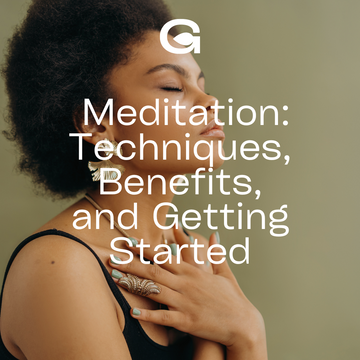In today’s fast-paced world, meditation has emerged as a critical tool for finding a sense of calm and maintaining mental balance. Yet, many people view it as mysterious or difficult. This post aims to demystify meditation, breaking down various techniques and highlighting its profound benefits to encourage you to start your own practice.
Understanding Meditation:
• What is Meditation? Briefly explain that meditation involves training your mind to focus and redirect your thoughts. It can take many forms, but all aim to promote a heightened state of awareness and focused attention.
• The Origins: Touch on meditation’s historical roots, spanning various cultures and millennia, emphasizing its enduring relevance and utility.
Benefits of Meditation:
• Reducing Stress and Anxiety: Highlight how meditation is particularly known for its effectiveness in reducing stress and anxiety. Discuss scientific studies that have shown meditation can decrease cortisol levels, the body’s stress hormone.
• Enhancing Emotional Health: Mention how regular meditation can lead to an improved self-image and a more positive outlook on life.
• Improving Concentration: Cite research indicating that meditation can improve concentration and attention span, even after just a few weeks of regular practice.
• Promoting General Well-being: Discuss how making meditation a regular habit can help maintain emotional balance throughout the day.
Popular Meditation Techniques:
• Mindfulness Meditation: Describe mindfulness meditation as the practice of being present and fully engaged with whatever you are doing at the moment — free from distraction or judgment.
• Focused Attention Meditation: Explain how this involves concentration using any of the five senses. For example, focusing on the breath, an image, or even a particular sound.
• Movement Meditation: This might be walking through a garden, practicing yoga, or other gentle forms of motion. It’s an active form of meditation where movement guides you.
• Mantra Meditation: Discuss the use of a repetitive sound to clear the mind. It can be a word, phrase, or sound, such as the popular “Om.”
• Transcendental Meditation: A more structured practice where the practitioner remains seated and breathes slowly, using a personally assigned mantra.
Getting Started with Meditation:
• Find a Quiet Space: Recommend starting with a peaceful place where you can relax without interruption.
• Set a Time Limit: Suggest beginning with short periods, like 5-10 minutes, and gradually increasing the time.
• Make it a Habit: Emphasize the importance of regular practice, suggesting the same time daily for meditation to enhance the habit.
• Use Apps and Classes: Recommend meditation apps or online classes that can guide beginners through various techniques.
Meditation is a powerful practice that offers numerous mental, emotional, and physical benefits. By starting small and being consistent, anyone can incorporate meditation into their daily routine and begin to experience its positive effects.
Why not give meditation a try today? Start with just five minutes in a quiet spot and observe the difference in your mood and mental clarity. Share your experiences with us, and let’s explore the path to mindfulness together!


